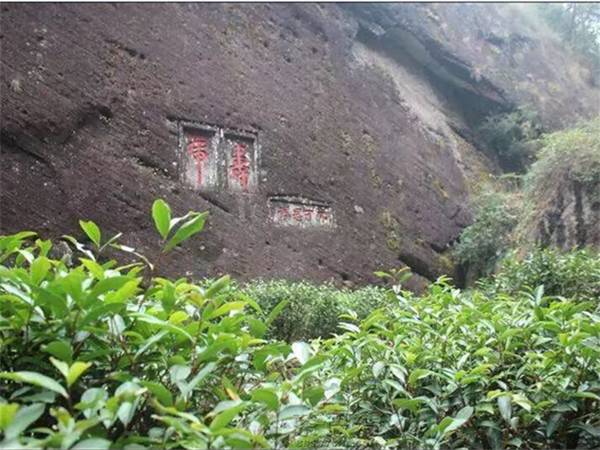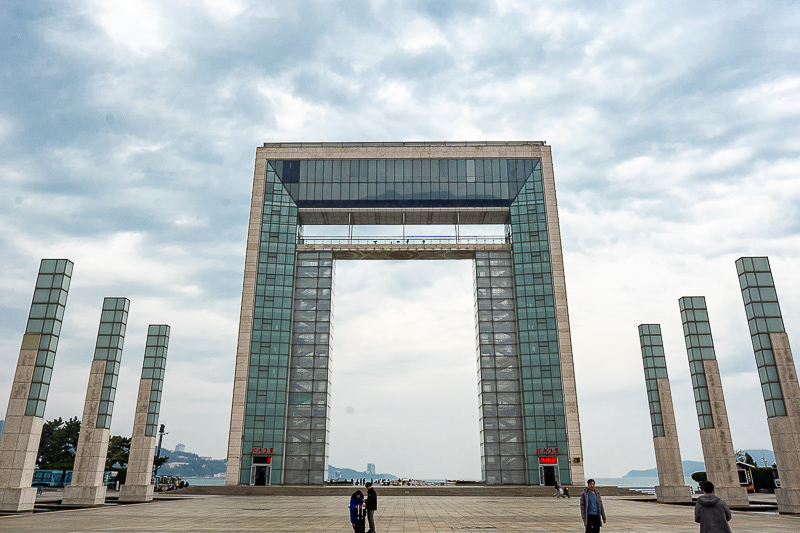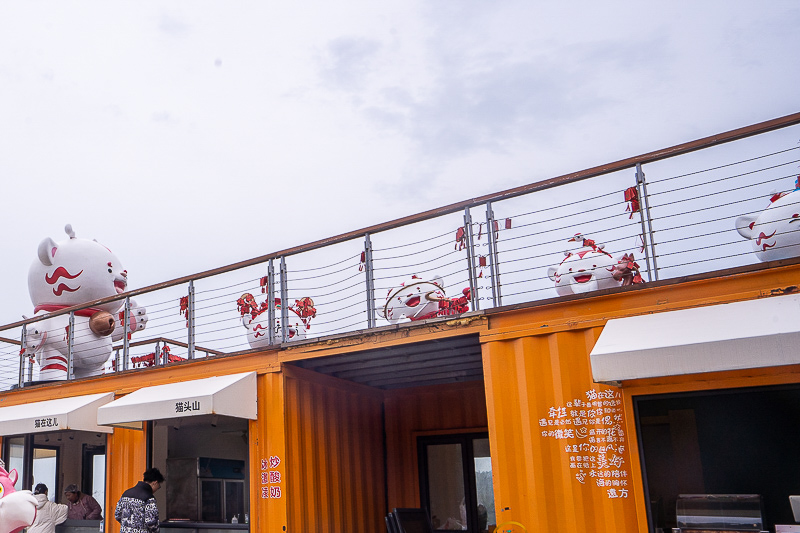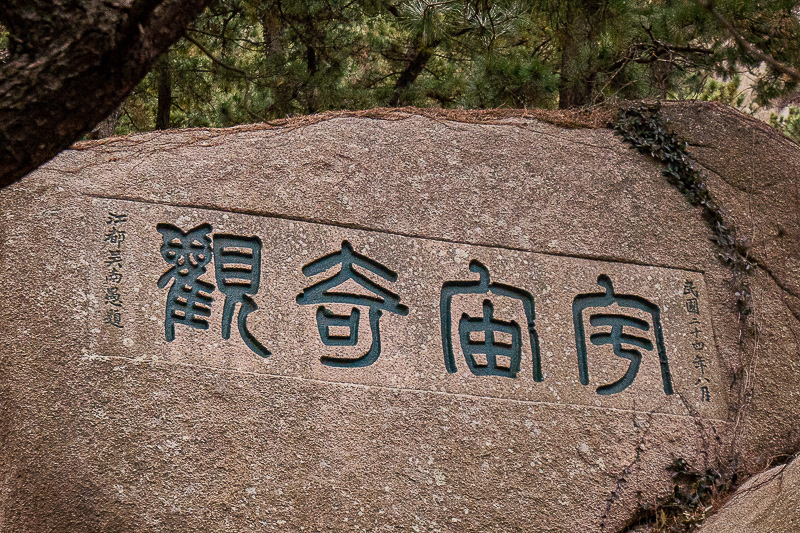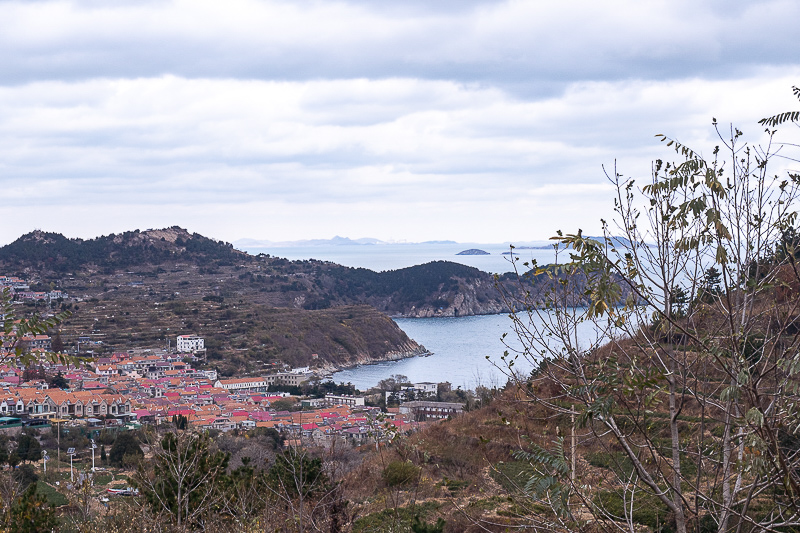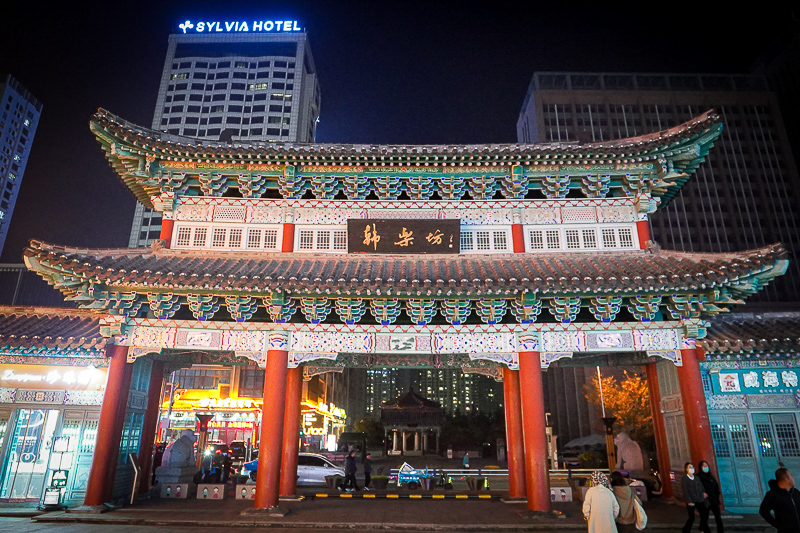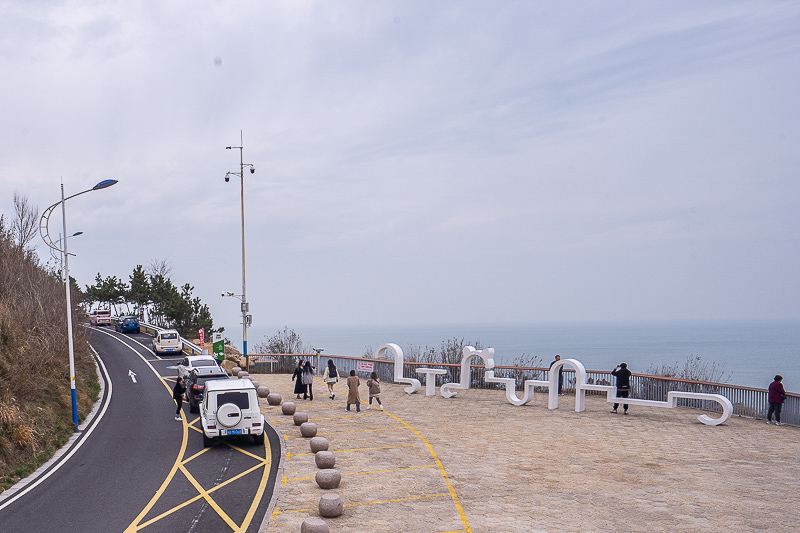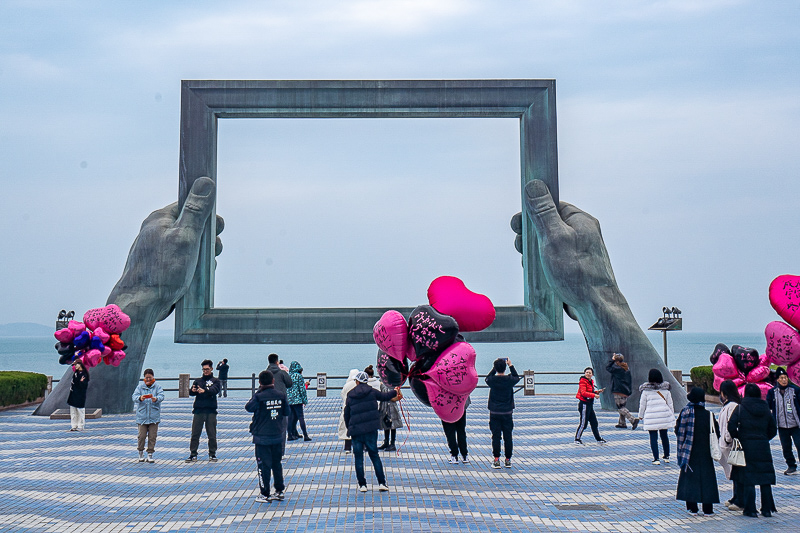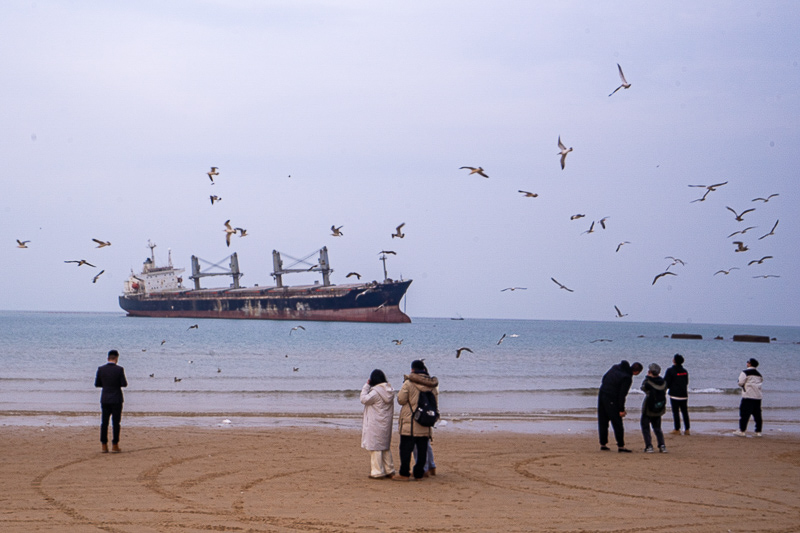本文目录
一、西安8大景点导游词~(简短点的)
今天我们将去参观西安城墙、钟楼和鼓楼。很荣幸能为大家服务。
我们现在看到的这座古城堡就是明西安城墙,是明初在唐长安皇城的基础上建筑起来的。它是我国中世纪后期历史上最著名的城垣之一,是世界上现存规模最大、最完整的古代军事城堡防御设施。
西安作为千年古都,历代曾多次修筑城墙。它们多数被历史的尘埃掩埋。我们现在看到的城墙可追溯到隋代。公元1369年,明王朝大将徐达从山西进入陕西,将原来的奉天路改为西安,意为“西方长治久安”。拉开了明在西安修筑城墙的序幕。历时8年修筑完的城墙外形是一座长方形。城墙高15米,顶宽12—14米,底宽16—18米,周长13.9公里。最底层用黄土与石灰、糯米汁拌合而成,干燥之后,异常坚固。
西安古城墙包括护城河、吊桥、闸楼、箭楼、正楼、角楼、敌楼、女儿墙、垛口等一系列军事设施。好了,现在让我们亲自来感受这座科学、严密、完整的军事防御体系。
城墙最外围是护城河,也叫“城壕”,是城墙的第一道防线。它可以阻滞敌人进攻,甚至可以利用有利地形把敌人趁机消灭。环绕西安城墙的护城河宽20米,跨过护城河就是城门,而连接护城河与城门的唯一通道就是吊桥。平时,守城士兵听从晨钟暮鼓的指挥,早晨降下吊桥,开启城门;晚上升起吊桥,断绝交通。一旦发生战争,吊桥升起,城门紧闭,城门就成为坚固封闭的战斗堡垒。
城门是城防体系的重点,也是薄弱点。平时,它是出入城市的通道。战争时,又是攻守双方争夺的首要目标。因此,明代十分重视完善城门防御设施。尤其值得注意的一大技术突破是采用了券拱式城门,以防止敌人火攻。明西安城的城门非常坚固,门扇用厚达16厘米的木板制成,一扇城门用木材2.8立方米,门扇上下横匝着铁条加固,每两道铁条的间隔处,钉有180枚铁蘑菇针。整个门扇上共有1800枚铁蘑菇针。这样就挤密了门扇的木材,增加了门扇刚度,使箭矢无法射入。
为了提高城门防御的保险系数,城门实际上由三重组成,即:闸楼、箭楼和主楼。闸楼在最外,它的作用是升降吊桥。兼用来打更。敌人攻入闸楼城门,好似进入瓮内,会受到来自四面居高临下的攻击,因此楼下这一空间也叫“瓮城”。箭楼在正中,正面和两侧都有窗户,供射箭用厦门返工包车。箭楼与箭楼之间用围墙连接起来的也叫“瓮城”,可屯兵。正楼在最里,正楼上面的城楼是城门的主体建筑,是主将镇守指挥所在。城墙外侧,每隔120米有一个突出于城墙主体之外的敌台,俗称“马面”。整个城墙上共有“马面”98座,“马面”上面的建筑叫敌楼,两个敌台之间相距120米,而它的一面为60米,为“一箭之遥”。这样的布局便于从侧面射杀攻城的敌人。因此,古人有评论说:“有城无台,亦如无城,是城所以卫人,台又所以卫城也。”。城墙上外侧有矮雉,又称“垛墙”,上有垛口和方孔,可供射箭和嘹望。内侧的矮墙称为“女儿墙”,是为了防止士兵行走时坠入墙下。在西安城墙四角各有一座城楼叫“角楼”。在箭楼与正楼形成的瓮城中,有通向城头的马道,便于战马上下。战争期间,这里是调兵遣将的咽喉要道,必须保证畅通无阻。因此守卫异常严格。
随着岁月的变迁,现在我们可以看到西安城墙的长乐门、安定门、朱雀门、含光门、玉祥门等等,这些名称的来历也从一个侧面反映了古城沉浮衰兴。明西安城墙显示了我国古代劳动人民的聪明才智,好了,西安城墙就参观到这里,我们将继续带大家去参观钟鼓楼。
钟楼和鼓楼是古代中国城市的特有建筑。钟与鼓本是中国最早出现的打击乐器,有3000年以上的历史。最初作为礼器和乐器。大约自春秋时期,开始用于军事指挥。古代中国城市兼有军事城堡性质,除城市四周构筑城墙,挖掘城壕,设置吊桥外,与之配套的还有在城市中心修筑钟鼓楼作为指挥中枢。平时以晨钟暮鼓报告时辰,定时启闭吊桥,紧急状态时用以报警戒严,指挥城防。这种严密的城市防御系统在明代发展到顶峰。西安是明代西北军政重镇,它的钟楼和鼓楼无论从建筑规模、历史价值或艺术价值各方面衡量,都居全国同类建筑之冠。
我们现在看到的这座建筑就是钟楼,位于西安市东西南北四条大街的交汇处,它建于明洪武十七年,最初位于西大街的迎祥观,随着城市中心的东移,到了明神宗万历10年,将钟楼来了个整体拆迁,迁至今址。
钟楼呈典型明代建筑艺术风格,楼高36米,重檐斗拱,华丽庄严。由基座,楼身和楼顶三部分组成。基座是正方形,全部用青砖砌成。楼身为正方形木质结构,外面以回廊环绕,里面为二层楼,楼内有木梯盘旋而上。楼内上下两层正方形大厅里,陈列着明代以来各种名贵瓷器及红楠木家具,四面门上布满浮雕画,风格厚朴生动。楼顶为四角攒尖结构,上面覆盖着碧绿色的琉璃瓦,顶端大圆顶高5米,金光闪闪,辉煌灿烂。
钟楼的西北角上陈列着一口明代铁钟,重5吨,钟边铸有八卦图案。它比钟楼早先悬挂的铜钟小得多。钟楼原先悬挂的巨钟是唐代景云年间铸造的“景云钟”。现在这口钟收藏于西安碑林。据说,钟楼从迎祥观迁到今址后,虽然楼的式样大小并没有改变,但景云钟却怎也敲不响了。没有办法,只有另换。为了将景云钟移到新建的钟楼上,当年在西大街西段搭起一座斜桥,利用桥面斜坡把景云钟运到了钟楼上。据说“桥梓口”也因此而得名。
钟楼内西墙上嵌刻有《钟楼歌》和《钟楼记》碑刻。《钟楼歌》是当年修建钟楼的陕西巡抚龚懋贤在解职赴京时登楼所赋。诗中对钟楼做了热情的赞颂。《钟楼记》是督修过钟楼的巡抚张楷所作,详细记述了钟楼的身世。在钟楼的门上有木刻浮雕故事画共64幅,其中有木兰从军、嫦娥奔月、柳毅传书、八仙过海等等。建国后,西安市人民政府又对钟楼进行了三次大规模修葺,使这座古建筑又焕发了昔日的风采。
与钟楼遥遥相对的是鼓楼,楼底门洞为南北向,北通北院门,南达西大街。鼓楼建于明洪武十三年,与钟楼是姊妹楼。在鼓楼的第一层北面有一面巨鼓,与钟楼上的晨钟形成暮鼓,所以称为鼓楼。楼体呈长方形,基座的门洞高与宽均为6米,洞深38米。鼓楼建筑为重檐歇山式,琉璃瓦覆顶,重檐三滴水。楼分上、下两层。南北檐下各有一块匾,南为清乾隆皇帝御笔刻书:“文武盛地”,北为咸宁县书生李允宽书写“声闻于天”。在鼓楼的外檐都饰有斗拱,四面有回廊。天花板上油漆彩绘云形图案,古色古香,十分美丽。钟鼓楼交相辉映,使古城西安更加美丽壮观。
好了,钟鼓楼的参观到这里就结束了。谢谢大家!
二、西安钟鼓楼城墙英文导游词
导游词,是导游人员引导游客观光游览时的讲解词,是导游员同游客交流思想,向游客传播文化知识的工具,也是应用写作研究的`文体之一。特点是口语化,还具有知识性、文学性、礼节性等特点。以下是小篇为大家整理的西安钟鼓楼城墙英文导游词。
The Bell Tower Drum Tower and the City Well in Xi’an龙海到厦门包车
Good morning Ladies and Gentlemen:
Today we will have three places to visit—the Bell Tower the Drum Tower and the City Well. First we come to the Bell Tower.
The Bell Tower, a classical building with carved beams and painted rafters, has been served as the symbol of Xi’an. It stands in the center of the downtown area where the north street, the south street, the west street and the east street meet. And the tower house a huge bell which in ancient times was use to strike the time every morning. This is how the tower got its name. now it is an important historical monument in shaanxi Province.
The Bell tower was first built in Ying Xiang temple in 1384 during the Ming dynasty. It was moved to its present site in 1582 as a result of the city‘s expansion program.
Ladies and gentlemen, There is a story about the Bell Tower. It’s said that the first emperor of Ming dynasty, Zhu yuanzhang, he was born in a poor family. Both his parent died when he was young, and he had to live a hard life. Later, he went to a temple to become a monk. When he ascended the throne, he was afraid of being deposed by someone of“real dragon”. Therefore, he gave orders to build bell tower all over the county to repress the“dragon spirits”. Xi’an has been the imperial capital city since ancient times. So the“dragon spirits” must be very strong here. That’s why the bell tower in Xi’an was not only built earlier, but also bigger than the other ones in the country. The base of the tower is 1,337.4 square meters in size, 8.6 meters high and 35.5 meters wide. It was laid with blue bricks all over. The whole building is 36 meters above ground. It is a brick-and–wood structure. The eaves are supported by colored“dou gong” a traditional structural system in which brackets are used to join columns and crossbeams, the use of dou gong made the whole building firm and beautiful.
Well, next we will visit the Drum Tower nearly.
The Drum Tower stands 500 meters to the northwest of the Bell Tower. It was built in 138051厦门包车. There used to be a huge drum in the tower, which told the time at dark, and that is how the tower got its present name. Besides marking the time, the drum was also used to give warnings to people in times of war. The base of The Drum Tower is 1,924 square meters in size, and 34 meters in height. It was built with blue bricks. The Drum Tower has a rectangular shape and shows tier and the outside eaves are decorated with networks of wood arches.厦门方特包车
At last, we will visit the famous city wall of Xi’an. The most complete and the best preserved city wall in china.
The city wall of Xi’an is an extension of the prior Tang dynasty structure. It was stared in 1370 and finished in 1378 and has a rectangular–shaped construction. It is over 4 kilometers from the east to west and about 3 kilometers from the north to south. And the total length is 13.7 kilometers. It stands 12 meters high, 12-14 meters wide across the top and 15-18 meters thick at the button. On the top of the city wall, there is a rampart every 120 meters, which extends out from the main wall. The top of the rampart is at the same level as the top of the wall. The ramparts were built to allow soldiers to see those enemies who would try to climb up the wall. The distance between every two ramparts is just within the range of arrow shot from either side. This allowed soldiers to protect the entire wall without exposing themselves to the enemy. There are altogether 98 of them on the city wall and each has a sentry building on top of it.
There are four main gates of the city wall-one on each side-named the east gate, the west gate, south gate and north gate. The four gates of the city wall were the only way to go into and out of town. In Xi’an, each of the four gates consists of three gate towers. The main gate tower is called ZhengLou which is located on top of the main part of the city wall. It is the inner one and is also the main entrance to the city. Zha lou is the gate tower which a suspension bridge and located outside of the city wall. It’s used to lift and lower the suspension bridge. Jian lou is the arrow tower and located in between the Zhenglou and Zhaloutowers. There are square windows in the front and on the two sides to shoot arrows厦门全国包车. Jianlou and Zhenglou are connected by walls and the encircled area is called Wongcheng in which soldiers could be stationed. From Wongcheng, there are also horse passages leading to the top of the wall. There are altogether eleven horse passages around the city.
A watch tower is located on each of the four corners of the wall. The one at the southwestern corner is round, probably after the model of the imperial city wall of the Tang dynasty. But the other three are square and are higher and larger than the sentry building on the ramparts. This shows the strategic importance of the corners of the city wall.
All right, we have finished visiting the famous city wall of Xi’an. Thank you.
三、西安大雁塔的英文导游解说词是什么
1、大雁塔是楼阁式砖塔,采用磨砖对缝(意思是将砖的 6个面磨光,用石灰、三合土、米浆粘连)的砌垒技术。大雁塔的特点是:砖结构体现出木结构的斗拱风格;砖墙上显出“棱柱”来,可以明显分出墙壁开间。这些都是中国特有的传统建筑艺术形式。大雁塔塔身高大,结构坚固,外观庄严、朴实、大方,充分体现了我国古代劳动人民的智慧和才能。
2、The Heavenly King and the Buddha in line drawings appear on the door frames and horizontal bars on the four sides of the pagoda's base. They are vividly portrayed in smooth lines and show a high level of workmanship. They serve as an important source of material for the study of paintings and sculptures of the Tang Dynasty. Out of these artistic works, the one on the horizontal bar of the west door is the most precious. It is a rare piece of art now used for the study of the Tang architecture.
3、塔底层四周门楣上雕刻有天王及佛像等线刻画,这些画刻工高超,形象生动,线条流畅,是研究唐代绘画及雕刻的重要资料,其中尤以西门楣的线刻画最为珍贵,是研究唐代建筑的珍贵艺术品。大雁塔的得名还有一段有趣的故事呢!传说玄奘在印度取经时曾住在一座大乘佛寺内。印度佛教分大乘、小乘两派。大乘吃素,小乘吃荦。玄奘住的这座寺院附近有一座小乘寺。一天该寺的僧人因吃不到肉而发愁,那天正好是菩萨布施日。一个和尚仰天叹道:“大慈大悲的菩萨一定不会忘记今天是什么日子!”他正说着,一群大雁飞来,头雁坠地而死。僧侣们个个惊愕万分,以为菩萨显灵,送来大雁以解饥苦。从此,全寺和尚不再吃肉并改信大乘佛教。他们还在大雁落地处修建了一座塔,取名“雁塔”。大雁塔就是玄奘依照印度那座“雁塔”的形式设计建造的。为了颂扬佛教,纪念玄奘,后来人们就称慈恩寺塔为“雁塔”。半个世纪后,荐福寺塔修成了。两塔遥遥相对,风采各异。因荐福寺塔比雁塔小,人们就将这座塔叫大雁塔,而将荐福寺塔改叫小雁塔了。
4、There is an interesting story about the name of the pagoda. It is said that Master Xuan Zang once stayed in a Mahayana temple in India. In fact, there are two major sects of Buddhism in India, the Mahayana and the Hinayana. The Mahayana believers are vegetarians while those of the Hinayana are non-vegetarians. Near the temple where he stayed, there was a Hinayana temple. One day, a monk was just worried about the shortage of meat in the temple. But it happened to be the General Alms Day of the Buddha, another monk looked up at the sky and sighed,“Our beloved Buddha, the Great and Merciful, will not forget what day it is today!” At these words, a flock of wild geese flew over the temple. The head goose dropped dead to the ground. The monks were all puzzled by this, and they concluded that this must be the result of the Buddha's spirit at work: to provide them with the wild goose. Ever since then, the monks of the temple became vegetarians and began to believe in Mahayana Buddhism. They also set up a pagoda where the wild goose dropped dead, and called it the Wild Goose Pagoda. The Wild Goose Pagoda that greets us today was acturally modeled after its Indian prototype. It was given the same name in memory of Xuan Zang and in praise of Buddhism. After about half a century, the pagoda at the Jianfu Temple was built. The two pagodas face each other over a distance, but assume different styles. Since the one in the Jianfu Temple is smaller than the Wild Goose Pagoda, it is often called the Small Wild Goose Pagoda.

